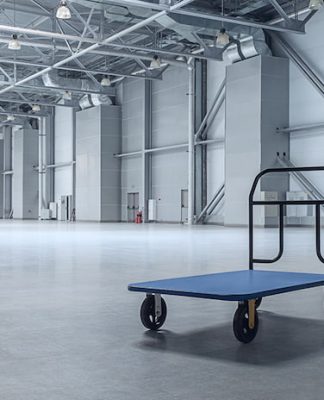As we cruise along the highways and navigate through the city streets, the unsung hero ensuring a smooth and controlled ride is our car’s suspension system. This intricate network of components is responsible for keeping our vehicles stable, enhancing comfort, and ensuring safety. However, the suspension is not impervious to wear and tear, and understanding the importance of timely replacement is crucial for maintaining optimal driveability.
Understanding Car Suspension Components
Before delving into the wear and tear aspect, let’s familiarize ourselves with the key components of a typical car suspension system:
- Springs: These are fundamental components that absorb and distribute the impact of bumps and irregularities in the road, ensuring a smoother ride.
- Shock Absorbers (Dampers): Working in tandem with springs, shock absorbers control the rebound and compression of the springs, preventing the vehicle from bouncing excessively.
- Struts: Combining the functions of springs and shock absorbers into a single unit, struts provide structural support to the suspension system.
- Control Arms: These connect the suspension to the vehicle’s frame and facilitate the up and down movement of the wheels.
- Sway Bars: Also known as stabilizer bars, these components minimize body roll during cornering, enhancing stability.
- Bushings and Bearings: These are crucial for reducing friction and ensuring smooth movement within the suspension system.
Susceptibility to Wear and Tear

The harsh reality of everyday driving, coupled with exposure to varying road conditions, puts immense strain on the car suspension part. Over time, each component undergoes wear and tear, leading to a gradual decline in performance. Common signs of deteriorating suspension include:
- Uneven Tyre Wear: Worn-out suspension can cause irregular tyre wear patterns, affecting the vehicle’s handling and compromising safety.
- Bumpy or Unstable Ride: If your car feels excessively bumpy or unstable, it may be an indication of deteriorating shocks or struts.
- Difficulty Steering: A compromised suspension can make steering more challenging, leading to a less responsive and potentially unsafe driving experience.
- Knocking or Clunking Noises: Unusual noises, such as knocks or clunks, often signal issues within the suspension system, necessitating immediate attention.
- Fluid Leaks: Shock absorbers contain fluid, and leaks can signify a loss of effectiveness, compromising the suspension’s ability to absorb shocks.
Importance of Timely Replacement
Ensuring the timely replacement of a worn car suspension part is not just about maintaining a smooth ride; it’s a critical aspect of vehicle safety. Here are compelling reasons why prompt replacement is essential:
- Safety: A compromised suspension system can lead to reduced control over the vehicle, increasing the risk of accidents, especially during emergency maneuvers or sudden stops.
- Tyre Performance: Worn suspension adversely affects tyre performance, leading to uneven wear and reducing traction, which can be particularly hazardous in adverse weather conditions.
- Braking Efficiency: Proper suspension contributes to optimal weight distribution, enhancing braking efficiency. A deteriorated suspension system can compromise braking performance.
- Alignment Issues: Worn suspension components can contribute to misalignment, affecting the steering geometry and making the vehicle harder to control.
- Comfort: Beyond safety, a well-maintained suspension system ensures a comfortable ride for both the driver and passengers, minimizing the impact of road imperfections.
Choosing the Right Aftermarket Suspension
Now that we understand the critical role of a healthy suspension system, let’s explore the world of aftermarket suspensions. Whether you’re looking for improved performance, enhanced handling, or a more comfortable ride, aftermarket options offer a range of choices. Here’s a guide to help you choose the most suitable one for your car:
Performance Suspension Kits
- Purpose: Designed for enthusiasts seeking improved handling and responsiveness.
- Components: Typically includes upgraded springs, shocks, and sometimes sway bars.
- Considerations: Ideal for spirited driving and cornering. This may result in a stiffer ride.
Lowering Springs
- Purpose: Lowers the vehicle’s centre of gravity for improved handling.
- Components: Upgraded springs that reduce ride height.
- Considerations: Enhances aesthetics but may compromise ride comfort. Careful consideration of ground clearance is essential.
Coilover Systems
- Purpose: Adjustable suspension offering a balance between performance and comfort.
- Components: Springs and shocks integrated into a single unit, allowing for height and damping adjustments.
- Considerations: Versatile option suitable for both street and track use. Requires precise tuning for optimal performance.
Air Suspension Kits
- Purpose: Adjustable ride height for improved versatility.
- Components: Utilizes air springs instead of traditional coil springs.
- Considerations: Offers a smooth ride and the ability to adjust height based on driving conditions. Complex installation and potential maintenance issues.
OEM Replacements
- Purpose: Direct replacements for original equipment.
- Components: Match the specifications of the factory suspension.
- Considerations: Ideal for those seeking a similar ride to the factory setup. Ensures compatibility with the vehicle’s design.
Comfort-Oriented Suspensions
- Purpose: Focuses on delivering a smoother and more comfortable ride.
- Components: Upgraded shocks and springs designed for comfort.
- Considerations: Suitable for daily commuting and long drives. May sacrifice some performance aspects.
Off-Road Suspensions
- Purpose: Geared towards off-road enthusiasts seeking improved durability and performance.
- Components: Reinforced components for enhanced resilience.
- Considerations: Offers increased ground clearance and durability. This may result in a stiffer ride on paved roads.
Choosing the Right Suspension for Your Car

Driving Needs
Consider Your driving habits and preferences. Are you focused on performance, comfort, or a balance of both?
Budget
Consider the cost of aftermarket suspensions can vary significantly. Establish a budget and explore options within that range.
Vehicle Compatibility
Ensure that the chosen suspension is compatible with your specific make and model. Some options may require additional modifications.
Installation and Maintenance
Consider the complexity of installation and any ongoing maintenance requirements. Some aftermarket suspensions may require professional installation.
Adjustability
If you prefer the ability to make adjustments, such as ride height or damping settings, choose a suspension system that offers this flexibility.
Brand Reputation
Research and choose reputable brands with a history of producing reliable aftermarket suspensions.
Conclusion
In conclusion, the suspension system is a cornerstone of vehicle safety and performance. Understanding the signs of wear and tear and promptly replacing compromised components is essential for a safe and comfortable driving experience. When venturing into the world of aftermarket suspensions, careful consideration of your driving needs, budget, and vehicle compatibility is paramount.
Whether you’re seeking improved performance, enhanced comfort, or a bit of both, the right aftermarket suspension can transform your driving experience and add a personalized touch to your vehicle. As you embark on the journey of choosing the most suitable suspension for your car, remember that the road to optimal safety and comfort begins with a well-maintained and thoughtfully selected suspension system.















